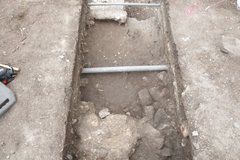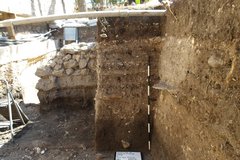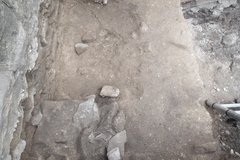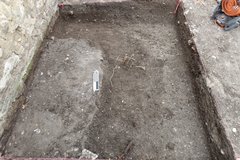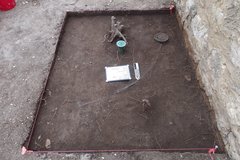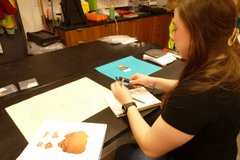This week five excavation units were active- EUs 2B, 4, 6, 10, and 12. Final documentation was recorded for EU-4 early in the week and the unit was closed by Wednesday. Archaeologists opened a new unit, EU-12, along the Long Barrack wall also on Wednesday. Excavations continued in EUs 2B, 6, and 10.
In EU-2B archaeologists reached an approximate depth of 50 cm below surface. Excavations revealed the limestone alignment was previously impacted by the installation of a utility conduit. However, approximately 50 cm south of the utility there are intact limestone cobbles that may be the continuation the original alignment. Preliminary thoughts are that the alignment was disturbed by the installation of the utility and then the stones were pushed to the side, as opposed to removed from the site. This could explain the disarticulated stones to the east of the more intact and level limestones that match up with the alignment. Further investigation is required to better elucidate the nature of the stones.
Archaeologists finished documentation of EU-4 this week. Final documentation includes photos, mapping, soil descriptions, and a written synthesis of what was encountered in the unit.

